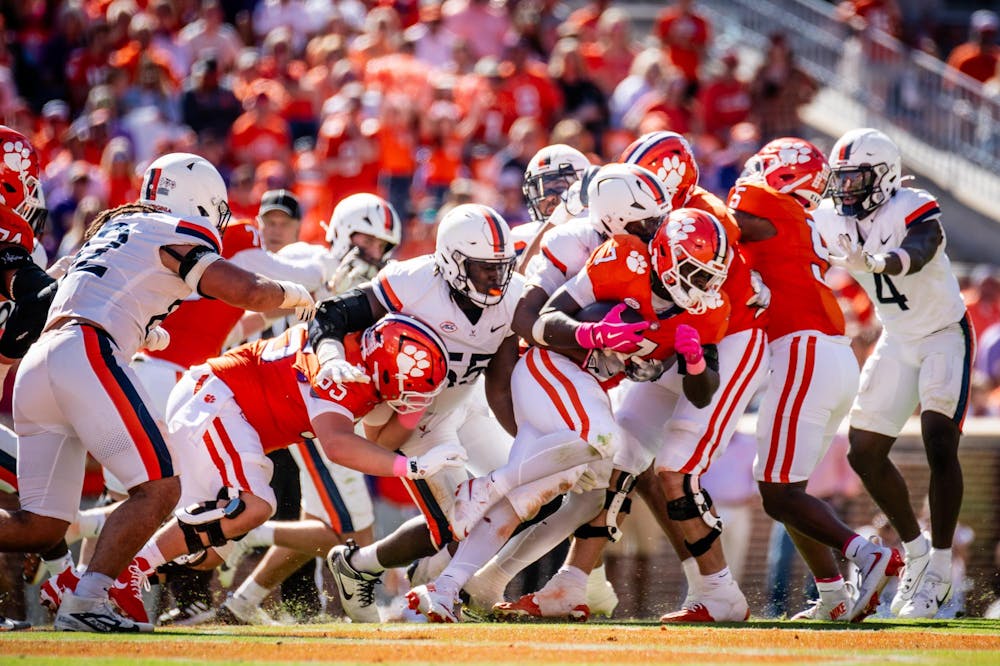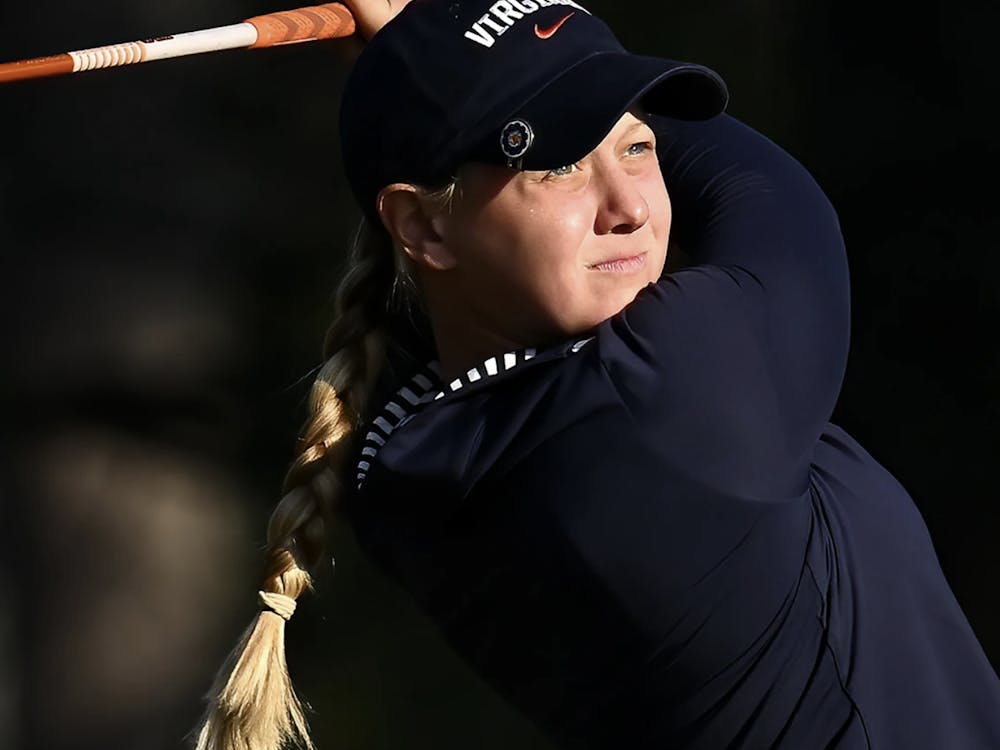Virginia’s 2025-26 schedule features Louisville, North Carolina, Virginia Tech and Duke. Those first three were among the best rushing offenses in the ACC last season. The Blue Devils, meanwhile, ranked eighth in least sacks allowed in the country.
Last season, the Cavaliers sacked opposing quarterbacks only 19 times, the second-least in the ACC. Their run defense was more inspiring, but still middling, as their 1,743 rush yards allowed was the exact median for the conference. These crucial ACC matchups will be somewhat of a trial by fire for the Cavaliers. Fortunately, this group is prepared to fight.
“Firemen.”
According to junior defensive tackle Anthony Britton, that is what members of the Virginia defensive line have taken to calling themselves. It is a fitting moniker — if the snap represents the lighting of a match, then the defensive line must smother the play before the flame can spread.
Britton has put out his fair share of fires. As the reigning Most Improved Player for the Cavaliers, his 38 tackles last season lead all returning linemen. He is a candidate to spend some time at nose tackle in defensive coordinator John Rudzinski’s time-tested 4-2-5 scheme — alongside what should be a very promising cohort out front.
The base formation of a 4-2-5 defense features four men at the line of scrimmage — a defensive end, a nose tackle, a defensive tackle and a hybrid Bandit end. Beyond the line, there are two linebackers, four defensive backs and one hybrid Spur who can play both safety and linebacker. The formation is essentially a redux of a 4-3 formation — four linemen, three linebackers and four defensive backs — but with more personnel flexibility.
Joining Britton on the interior of the line is graduate nose tackle Jahmeer Carter. Carter started all 12 games at the position last year and has received significant playing time since his freshman year, totalling nearly 3,000 career snaps.
Meanwhile, reinforcements are coming for Britton and Carter. Junior defensive tackle Jason Hammond, who missed eight games due to a shoulder injury last season after starting the first four, is returning fully healthy.
Key additions, including junior defensive tackle Hunter Osborne from Alabama, senior defensive tackle Jacob Holmes from Fresno State and freshman defensive tackle Sichan John, add further versatility.
Osborne in particular is an exciting rotational piece for interior defensive line coach Kevin Downing’s unit. A former four-star recruit who got buried on the depth chart at Alabama, the 6-foot-4, 301 pound junior’s strongest attribute — aside from his size — is his coachability.
“He’s a low-rep kid,” Downing said. “He picks things up really fast.”
Similar to the interior line, the Cavaliers have experienced an improvement in both versatility and depth on the edge. On the weak side — usually the side opposite from where the tight end lines up — senior transfer defensive end Cazeem Moore will make an impact. Moore was dominant at Elon, making Second Team All-CAA last season. Meanwhile, senior Terrell Jones and graduate transfer Daniel Rickert will back him up.
While the SPUR position is a safety and linebacker hybrid, the Bandit position is a hybrid of the linebacker and end positions. Rudzinski seems to view graduate transfer Mitchell Melton as the man for the job.
“He can rush the passer, so he’s going to have to win a one-on-one with an offensive tackle,” Rudzinski said during the team’s Aug. 4 media availability. “He’s going to have to do a great job of setting a vertical edge, and then there’ll be some movement pieces that we’ll be able to take advantage of.”
Melton struggled with injuries at Ohio State, but during offseasons he trained to play a linebacker-end hybrid role under then-defensive coordinator Jim Knowles. Knowles, who is now at Penn State, runs a similar 4-2-5 scheme to Rudzinski, so there is a degree of comfortability there.
Another transfer who will see significant action on the strong side is senior defensive end Fisher Camac. In 2024, Camac qualified for Third Team All-Mountain West with Nevada Las Vegas, putting up 7.5 sacks and five pass break-ups.
Even at 6-foot-7, Camac is only the second tallest Cavalier defensive lineman. Sophomore defensive end Billy Koudelka, who earned a scholarship after walking onto the team last year, stands 6-foot-8. This spring, Koudelka’s performance was just as impressive as his height.
“He just works his tail off,” defensive ends coach Chris Slade said, “He has a shot to get drafted if he stays healthy and he continues to work.”
The former walk-on is a player to keep an eye on, for this season and beyond. It is players like Koudelka that, combined with transfer additions, could become the heartbeat of Virginia’s defense.
The Cavaliers’ 2025 defensive front is a fluid one, full of dynamic “firemen” and seemingly limitless personnel combinations within Rudzinski’s scheme. Soon, they will hop in the truck and turn the hose on opposing offenses.







